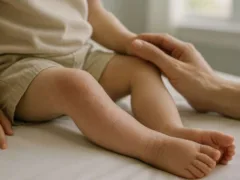By Dana DeMercurio
Did you know that the average person loses roughly 100 strands of hair per day? Sounds like a lot, right? Not when you put it into perspective.
Here are just a few common and not-so-common reasons why your tresses may not be so tangible:
Stress: Whether emotional, mental or physical, stress plays one of the biggest roles in women who suffer from hair loss. As a normal part of growth, hair will grow for a few years then have a resting period for a few months. This resting period in the hair growth cycle is called Telogen, and it’s characterized by a period of shedding followed by regrowth. In cases where men and/or women suffer from high levels of emotional, mental or physical stress (loss of a loved one, divorce, major surgery, crash diets, and yes, even pregnancy), it is possible that hair is prematurely pushed into this resting stage of the hair growth cycle (also known as Telogen Effluvium). It’s also common to find this type of hair loss on other parts of the body including arms, legs and genital region.
Poor Diet: Lack of proper nutrition and vitamin intake can wreak havoc on your hair. Diets high in fatty and fried foods, sugars and simple carbohydrates can result in slower hair growth and overall decrease in the health of your hair. If you notice your skin is not as bright and clear as it once was and your hair isn’t looking as long and lush either, it’s time to connect the dots and make a change in your eating habits ASAP. Diets lacking proper proteins (plant or animal based) are a major culprit in this scenario.
Genes: Remember when your Aunt Betty starting going bald at the ripe old age of 45 and you thought such a thing could never happen to your luscious locks? Well, think again. Female pattern hair loss, or FPHL, has a strong genetic predisposition. Women of all ages can be affected by FPHL, but research shows that it occurs most commonly during and/or after menopause (as if that time of life isn’t hard enough!). This heredity hair thinning and balding affects an average of 80 million Americans, so finding a support group probably won’t be too difficult.
Improper Haircare: Ladies love their haircare products and styling tools, but it all comes at a cost. Frequently using harsh chemicals to color or bleach hair, daily use of hot tools for styling and restrictive products such as rubber hairbands and clips can cause extreme breakage that leaves hair looking and feeling brittle and dried out. The goal is to lock moisture in, not burn it out.
Aging: Though no one ever really wants to admit or confront the signs of growing old, it’s inevitable -even with Botox. Along with liver spots and the sagging of previously tight skin, women often experience accelerated rates of hair loss and graying. Noticeability in women it occurs in or around the time of menopause (50+ years).
Illness: Underlying medical conditions can prompt acute hair loss in both men and women, such as anemia, diabetes, and thyroid disease, just to name a few. Why many illness-related hair loss cases can be reversed, it’s takes medical evaluation to know which circumstance is causing the thinning or balding.
Overdose of Certain Vitamins: According to the American Academy of Dermatology, people who consume too much Vitamin A in their diet have experienced acute hair loss. In contrast, people who don’t consume enough iron can see similar affects.
So, that’s the bad news. But don’t fret – we’ve got some simple solutions to mend your mane. Here’s how:
Biotin Boost: Also known as Vitamin H, biotin is found in small amounts of numerous foods, but is often lacking in many adults’ diets. Adding a daily dose of biotin to your oral supplement regimen will boast brilliant results you can see and feel.
Pack in the Protein: If your diet doesn’t consists of enough animal or plant based protein, your body may ration whatever protein is available by slowing or shutting down hair growth. Adding a healthy amount of proteins such as fish, eggs, romaine lettuce, nuts and beans can bring your hair back to life within just a few months. And, of course, wash it all down with a minimum of 64 ounces of water a day.
Beat the Heat: If you’ve using a blow dryer, curling iron or flat iron on a daily basis, you’re asking for trouble. Doctors suggests limiting your use of these styling tools to once a week at the most in order to prevent damage and hair breakage and/or loss.
To Brush or Not to Brush: Rubbing wet hair with a towel after showering followed by a quick brushing seems innocent enough, right? Turns out it’s a sure-fire way to expect more breakage and possible loss. Hair is more elastic when wet, therefore it can break off easier than when it’s dry. Dermatologists suggest letting hair air-dry and limit combing or brushing to less than 100 strokes a day.
Feast on Fruits and Veggies: As if you didn’t already know, fruits and vegetables provide a host of vitamins and minerals that are known to promote healthy hair and nails. If you’re looking for the right fruits and veggies to add to your diet, here’s a link to get you started: Bests Foods for Hair Loss.
Make a Visit to the Medicine Man: If you think an outstanding illness is to blame for your excessive hair loss, a quick trip to the doctor for a blood test could put your mind at ease. Your physician may be able to pinpoint the root cause of your problem and provide a prescription or at-home remedy.
Scalp Massage, Anyone?: Getting the blood to flow through your scalp is the easiest way to promote hair growth. Stimulate your follicles for just 10 minutes a day to see an improvement. To increase stimulation, certain oils can be used including coconut, olive, almond or sesame.
















